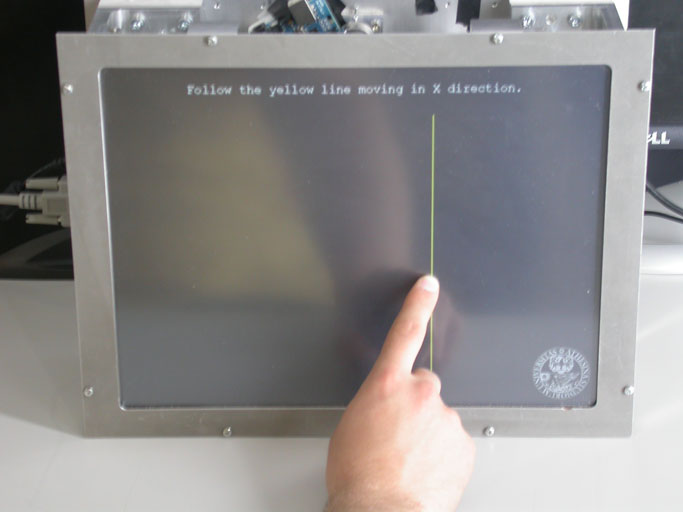In executing the task, subjects are asked to follow a vertical line moving in horizontal direction and to stay aligned with it as much as possible.



Figure – a sequence of the transfer function test.
With this test the user response to target motion is studied in the frequency domain by examining the transfer functions between the vertical line position, considered as input, and the touch position, considered as output (see figure). These functions are estimated by means of random input while acquiring the finger position that is fitted to the theoretical time response by optimizing the parameters of the model.
Transfer functions have been used to model how human beings control several types of plants, for example the lane keeping task in automobiles (Kondo-like models) or route keeping in aircraft. In [Sharp 1971, Verma 1978, Sharp 1983] focus was given to the context of stability analysis, especially focusing on the driver’s actions or external disturbances that excite oscillatory modes. Studies about how human beings work as control systems, how they collect information, plan manoeuvres and execute them are rapidly increasing. For cars, a review of factors that contribute to ‘handling’, as perceived by drivers, may be found in the work [Savkoor 1997]. For example, some insight into how a driver’s brain works in vehicle control and manoeuvre planning (for professional race drivers) may be found in a recent work [Spackman]. Nevertheless, exactly which vehicle dynamic behaviours are most desirable to drivers is not yet completely understood, as pointed out by [Horiuchi 2000].
The application of the human transfer function was developed for the Veritas project to simulate the user behaviour in performing a human computer interaction task and simulate it.


Figure – experimental and fitted function as a function of frequency (left); input pseudorandom step sequence, acquired and fitted output (right).

